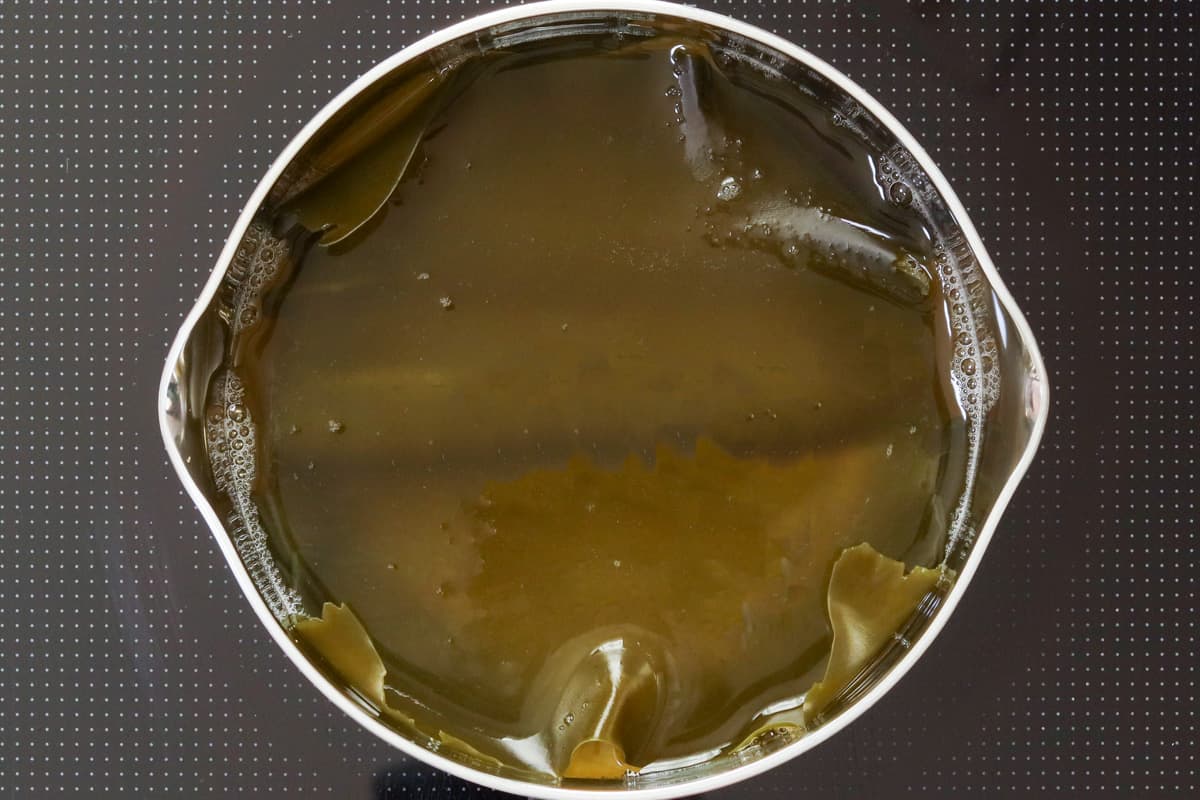If you want to enjoy miso soup with salmon, Ishikari Jiru is the perfect choice. The flavors of salmon and vegetables blend with miso, offering a distinctive taste different from traditional miso soup.

Jump to:
What is Ishikari Jiru?
Ishikari Jiru is a hearty soup made by simmering salmon fillets with vegetables in kombu dashi and dissolving miso in it. "Ishikari" refers to the Ishikari region in Hokkaido, the northernmost part of Japan, and "Jiru" means soup.
As the name suggests, it was originally enjoyed in the Ishikari region, which is famous for its salmon fishing. However, due to its ability to provide a delicious and easy way to consume the protein from salmon and the nutrients from vegetables, it became popular throughout Japan. Today, it has also become a familiar dish in school lunches.
While it is a soup, it is an excellent dish that offers a balanced meal with vitamins, dietary fiber, protein, and carbohydrates.

Commonly Used Ingredients
Ishikari Jiru originally comes from the Ishikari region in Hokkaido, so it is customary to use vegetables that are readily available there. In other words, carrots, potatoes, green cabbage, naganegi (Japanese leeks), onions, daikon radish, and corn are commonly used.
In addition to these vegetables, ingredients such as mushrooms, tofu, aburaage (deep-fried tofu), and konjac are sometimes added. Since this soup boasts a rich flavor of salmon and miso, it can accommodate a wider variety of ingredients compared to typical miso soup.
The flavors of the salmon and vegetables themselves are enough to create a delicious soup, but adding butter or sansho (Japanese pepper) can enhance the dish's flavor. Feel free to try these additions to experience different flavors according to your preference.
How to remove the odor of salmon
To enhance the flavor of this soup, you should prepare the salmon to remove its odor. In Japan, the following preparation methods are commonly used:
- Sprinkle sake over the fillets and let them sit for about 5 minutes (recommended).
- Evenly sprinkle approximately 2% of the salmon's weight in salt on both sides of the fillets, then refrigerate them for a few hours to draw out excess moisture. After that, pat the salmon dry thoroughly.
- Make a cross-shaped incision on the fillets and blanch them briefly for 5-10 seconds, then cool them immediately in ice water.
In this recipe, I have shared the easiest and quickest method of sprinkling sake over the salmon fillets. However, if you still have concerns about residual odor, you can try combining it with other methods for better results.

📋Step-by-step recipe
Ingredients
- 1 salmon fillet (about 3.2 oz/90 g)
- - 1 Tbsp sake (for the salmon fillet)
- 3.5 oz potato
- 1.8 oz carrot
- 3.5 oz Japanese leek (naganegi) (it can be substituted with regular leek)
- 3.5 oz green cabbage
- 1 Tbsp sake
- 2 Tbsp miso
Kombu dashi:
- 2 cups water
- 0.17 oz kombu (dried kelp)
Topping:
- 0.35 oz butter (optional)
Instructions
🕒 Total: 55 minsIf you already have kombu dashi, start from step 3. In this case, use 2 cups (480ml) of your dashi for 2 servings.

Step 1
Put water and kombu in a pot and let it sit for at least 30 minutes until the kombu softens.

Step 2
Heat the pot over very low heat for about 10 minutes (for 2 servings). When small bubbles appear on the surface of the liquid, turn off the heat and remove the kombu. Kombu dashi is ready.

Step 3
Sprinkle sake over salmon fillet and let it sit for about 5 minutes.

Step 4
Remove the scales from the salmon and cut the fillet into bite-sized pieces. Cut the potato, carrot, Japanese leek, and cabbage into bite-sized pieces.

Step 5
Bring the kombu dashi in the pot to a boil, then add the salmon, carrot, and potato. Reduce the heat to low and simmer for about 10 minutes until they become tender, occasionally skimming off any scum.

Step 6
Add the leeks, cabbage, and sake to the pot and bring it to a boil for a few minutes. Turn off the heat, then dissolve the miso using a ladle and chopsticks.

Step 7
Serve in each bowl and top with butter, if desired.
To Store
You can store it in the refrigerator for up to 2 days.
Tips on how to make
- Salmon fillets should be prepared to remove the odor. In this recipe, I’m using sake to reduce the odor of salmon, but you can also employ another method to eliminate it.
- Add the miso last and avoid heating it afterward. If the miso is heated after being added, the flavor and beneficial bacteria in the miso may be lost. Therefore, it is recommended consuming the soup immediately after cooking. If reheating is necessary, do so gently, just enough to prevent it from boiling.
Recipe card

Ishikari Jiru (Japanese Salmon Miso Soup)
Ingredients
- 1 salmon fillet (about 3.2 oz/90 g)
- - 1 Tbsp sake (for the salmon fillet)
- 3.5 oz potato
- 1.8 oz carrot
- 3.5 oz Japanese leek (naganegi) (it can be substituted with regular leek)
- 3.5 oz green cabbage
- 1 Tbsp sake
- 2 Tbsp miso
Kombu dashi:
- 2 cups water
- 0.17 oz kombu (dried kelp)
Topping:
- 0.35 oz butter (optional)
Instructions
- Put water and kombu in a pot and let it sit for at least 30 minutes until the kombu softens.
- Heat the pot over very low heat for about 10 minutes (for 2 servings). When small bubbles appear on the surface of the liquid, turn off the heat and remove the kombu. Kombu dashi is ready.
- Sprinkle sake over salmon fillet and let it sit for about 5 minutes.
- Remove the scales from the salmon and cut the fillet into bite-sized pieces. Cut the potato, carrot, Japanese leek, and cabbage into bite-sized pieces.
- Bring the kombu dashi in the pot to a boil, then add the salmon, carrot, and potato. Reduce the heat to low and simmer for about 10 minutes until they become tender, occasionally skimming off any scum.
- Add the leeks, cabbage, and sake to the pot and bring it to a boil for a few minutes. Turn off the heat, then dissolve the miso using a ladle and chopsticks.
- Serve in each bowl and top with butter, if desired.
Notes
- If you already have kombu dashi, start from step 3. In this case, use 2 cups (480ml) of your dashi for 2 servings.
- You can store it in the refrigerator for up to 2 days.





Leave a Rating and a Comment